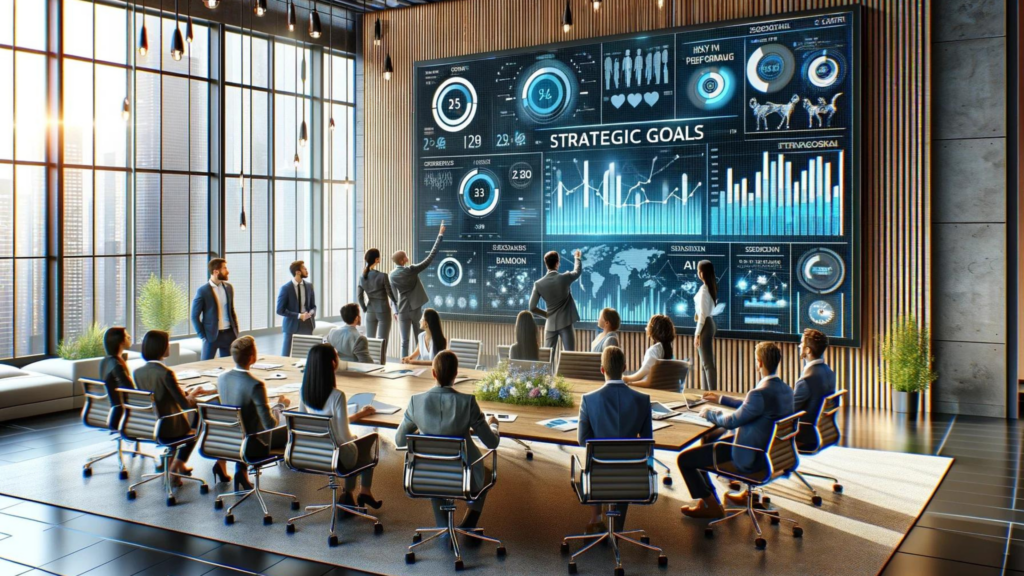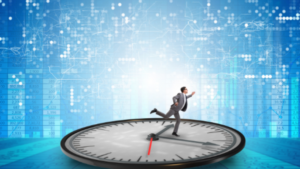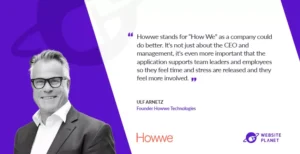The changing role of CEOs and technology for the CEO
Being a CEO is not a one-size-fits-all role. Depending on the stage of growth of the company, the CEO must face different challenges, adopt different mindsets, and develop different skills.
As companies scale, the complexity of managing cross-functional initiatives grows exponentially. In this article, I will explore how the role of the CEO changes from start-up to scaleup to large global, what are the competing forces that affect the CEO’s tenure and importantly how digitisation is helping modernise and assist leaders at all levels. I will also examine how tools like Howwe® are becoming indispensable. Because Howwe® streamlines the execution of strategy, ensuring that all teams are aligned with the company’s most critical goals, thereby accelerating financial impact, it is a positive catalyst for the CEO in driving transformation, no matter what stage of the life cycle the business is at. Simply put, by focusing on a few Most Important Goals (MIG’s), Howwe helps CEOs and their leadership teams drive performance and maintain clarity across all levels of the organisation.
Start-up: The Visionary and the Builder
At the start-up stage, the CEO is the visionary and the builder of the company. The CEO must create a compelling vision for the product or service, attract and retain the right talent, secure funding and resources. The CEO must be hands-on and involved in every aspect of the business, from product development to marketing to sales. The CEO must be agile, adaptable, and resilient, as the start-up environment is full of uncertainty, risk, and change. The main challenges for the CEO at this stage is to validate the product-market fit, achieve product-market traction, and build and establish a loyal customer base with successful brand development.
Scale-up: The Leader and the Manager
At the scaleup stage, the CEO is the leader and the manager of the company. The CEO has to transition from being a doer to being a delegator and, crucially, empower the team to execute their vision. The CEO must establish a clear and concise strategy and develop and reinforce a strong culture, retaining the sense of purpose of why people started the journey with the CEO in the first place. The CEO naturally becomes less ‘hand-on’ as they put in place a scalable structure for the company while balancing the need for innovation and experimentation plus driving efficiency and consistency. The CEO must be strategic, collaborative, and communicative, as the scale-up environment is full of complexity, competition, and growth challenges. The main questions for the CEO externally at this stage are to sustain growth momentum, and funding, expand the market share, and build a competitive advantage while internally being able to resist the urge to be a micromanager (constricting growth) but being comforted they still have the right level of visibility and control over the company. At the scale-up stage, as the CEOs builds a more complex and scalable organisation, the need for effective execution of cross-functional initiatives becomes paramount. CEO’s must ensure that their core company-wide strategic themes, for instance such as digitalization, automation or efficiency, and customer satisfaction, market share or product focus, are not just buzzwords but are connected to actionable plans. Howwe provides a robust, proven and proactive framework where each initiative is broken down into clear milestones and key activities, with dedicated ownership and associated timelines. This methodology and structure helps scale-up companies translate the top-level strategic decisions into concrete actionable elements driving measurable financial outcomes which facilitate efficient and sustainable growth.
Large Global: The Steward and the Ambassador
When the company reaches the ‘large global’ stage in its lifecycle, the CEO is the steward and the ambassador of the company. They protect and enhance the brand reputation, value, and build the legacy of the company. The CEO spends time engaging with a wide range of stakeholders, from investors to regulators to customers to employees. At this stage of the company’s evolution, the CEO must balance the inherent need for stability and continuity with the need for continual change, transformation and rebirth.
In this ‘large global growth’ phase, companies face the dual challenges of maintaining market share while driving continuous transformation. Howwe® supports CEOs in managing this balance by offering a transparent platform for tracking progress and making data-driven decisions. With Howwe®, large organisations can visualize the impact of their corporate initiatives in real-time, ensuring that efforts are focused on high-value activities. This not only enhances operational efficiency but also empowers leaders to inspire and guide their teams towards achieving long-term strategic goals. The playing field for the ‘large global’ CEOs’ is full of opportunities, challenges, and expectations. The main challenge for the CEO at this stage is to maintain the market trajectory, adapt to the changing environment, and coach and inspire the future generation of leaders from within.
Conclusion
Being a CEO is a dynamic and demanding role that requires different skills and mindsets at different stages of growth. The average tenure of a CEO is around 5 years, which means that the CEO must constantly adapt and evolve with the company and ensure their businesses act at each stage of their lifecycle. The challenges and skills of being a CEO change from start-up to scale-up to large global. The CEO must be aware of the different influences throughout their tenure and embrace change.
One of the tools that helps CEOs manage their way through different stages of the company’s maturity is Howwe®. This is a software platform that enables CEOs and their teams to align on their goals, track their progress, and collaborate effectively. Howwe helps the CEO to visualize the progress and actions towards the strategic plan and all leaders develop a more proactive approach to setting goals, enabling everyone to align the company’s resources and efforts towards the most important and impactful goals. Howwe helps teams avoid wasting time and money on low-value activities. At the same time, it empowers the teams and individuals to make decisions and take actions that are aligned with the company’s strategy, reducing the need for micromanagement and bureaucracy. Through Howwe’s Acceleration Meeting methodology built-in to the digital platform, it provides a clear, fast pathway for escalation of any issues that are bottlenecks to the plans’ chances of success. Howwe® gives the CEO and their staff the best methodology and platform to drive and empower performance no matter what stage of growth the company is at.





